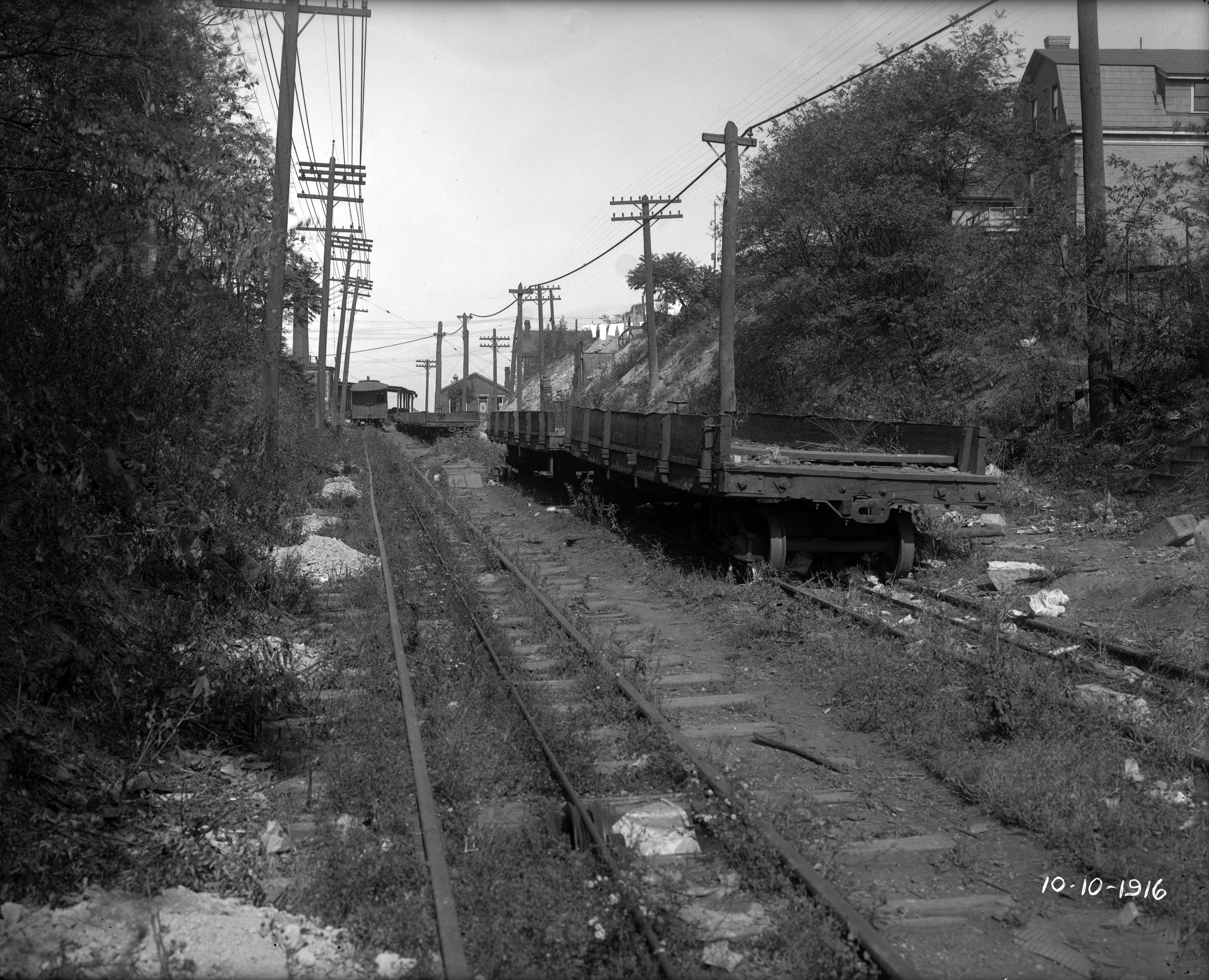Castle Shannon South Incline on:
[Wikipedia]
[Google]
[Amazon]
Castle Shannon Incline Number 2 was an inclined 
Engineering drawings
{{Pittsburgh History of Allegheny County, Pennsylvania Defunct funicular railways in the United States Railway inclines in Pittsburgh Railway lines opened in 1892 1892 establishments in Pennsylvania 1914 disestablishments in Pennsylvania
cable railway
Cable may refer to:
Mechanical
* Nautical cable, an assembly of three or more ropes woven against the weave of the ropes, rendering it virtually waterproof
* Wire rope, a type of rope that consists of several strands of metal wire laid into a hel ...
in Pittsburgh
Pittsburgh ( ) is a city in the Commonwealth (U.S. state), Commonwealth of Pennsylvania, United States, and the county seat of Allegheny County, Pennsylvania, Allegheny County. It is the most populous city in both Allegheny County and Wester ...
, Pennsylvania
Pennsylvania (; ( Pennsylvania Dutch: )), officially the Commonwealth of Pennsylvania, is a state spanning the Mid-Atlantic, Northeastern, Appalachian, and Great Lakes regions of the United States. It borders Delaware to its southeast, ...
. It was originally designed by Samuel Diescher
Samuel Diescher (June 25, 1839 – December 24, 1915) was a prominent Hungarian-American civil and mechanical engineer who had his career in the United States. After being educated at universities in Karlsruhe and Zurich in Europe, he immigrated ...
, and opened in 1892 as part of the Pittsburgh and Castle Shannon Railroad
The Pittsburgh and Castle Shannon Railroad was a narrow-gauge railroad in Allegheny County, Pennsylvania. Originally built in 1871, it may have been the first American common-carrier narrow-gauge railroad. It purchased a rail line called the Co ...
as a means of transporting passenger traffic over Mt. Washington in concert with the Castle Shannon Incline
The Castle Shannon Incline was a funicular railroad in Pittsburgh, Pennsylvania. It was originally part of the Pittsburgh and Castle Shannon Railroad route to the suburb of Castle Shannon. It replaced an earlier incline dating to 1825 that brou ...
(called Incline No. 1 while this one was still in service). From the top station at Bailey Street, adjacent to the Castle Shannon Incline top station, No. 2 ran down hill west of Haberman Avenue, ending at Warrington Avenue.
In 1891 Street Railway Journal described No. 2 as "more of the nature of a cable road than an inclined plane" because "an endless cable is used to draw a train of cars." The drop was only 185 feet in 2112 feet, with varying degrees of descent. Before completion of the two Castle Shannon inclines, passenger service was run up the south slope on a route involving a "horseshoe curve" (north of Warrington Avenue and west of Haberman Avenue) and a tunnel that was originally a coal mine, and at the top passengers changed to an older incline to travel down to Carson Street. Coal trains continued to use the old route including the old incline. In the Street Railway Journal account, No. 2 was built to "bring a train of six loaded narrow gauge passenger cars from the railroad to the top of the hill, where passengers may change to the No. 1 incline and descend." The method is not stated, but a grip car was probably used.

Pittsburgh Railways
Pittsburgh Railways was one of the predecessors of Pittsburgh Regional Transit. It had 666 PCC cars, the third largest fleet in North America (after Toronto (745) and Chicago (683)). It had 68 streetcar routes, of which only three (until April 5 ...
, a trolley system, took over the Castle Shannon passenger service in 1909 and routed their cars through the Mount Washington tunnel that is still in use today. The inclines were no longer part of a through route. Cars continued to run on No. 2 incline for a few years, but it was closed in 1914, with one daily trip being made for franchise purposes until 1919.http://www.liquala.com/pcs.html An undated photograph shows a car with a body like a streetcar on the incline.
See also
*List of inclines in Pittsburgh
Beginning in 1870, the city of Pittsburgh, Pennsylvania built numerous inclined railways to provide passenger service to workers traveling the steep hills to their homes; there were 17 built in the late 19th century. Following road building and gre ...
References
External links
Engineering drawings
{{Pittsburgh History of Allegheny County, Pennsylvania Defunct funicular railways in the United States Railway inclines in Pittsburgh Railway lines opened in 1892 1892 establishments in Pennsylvania 1914 disestablishments in Pennsylvania